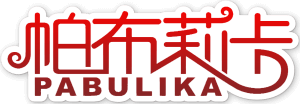垂柳
唐彦谦
绊惹[1]春风别有情,
世间谁敢斗轻盈?
楚王[2]江畔[3]无端种,
饿损纤腰[4]学不成。
注释:
[1] 绊惹:这里是逗引的意思。
[2] 楚王:指楚灵王。
[3] 江畔:楚王栽柳之所应该为长江江畔。《中朝故事》载:唐代曲江江畔多柳,号称“柳衙”。因此,这里的江畔可以理解为长安附近的曲江。
[4] 饿损纤腰:指楚灵王喜欢纤腰的人。郢都的人们都用少食的办法想让自己瘦下来,所以后代有用“楚腰”来形容女子的体态妖娆。杜牧《遣怀》诗中就有“落魄江湖载酒行,楚腰纤细掌中轻”句。
The Weeping Willow
Tang Yanqian
Flirting with vernal breeze, the willow sways so tender.
Who in the world can vie with it but the waist slender?
It is planted at random by the riverside.
How many maids fond of its leaves of hunger died?
The poet satirizes the maidens trying to make their waist as slender as willow branch.
赏析
首句“绊惹春风别有情”,撇开垂柳的外貌不写,径直从动态中写其性格、情韵。柳枝的摇曳,本是春风轻拂的结果,可诗人不以实道来,而说是垂柳有意撩逗春风。“绊惹”二字,把垂柳写活,第二句,“世间谁敢斗轻盈?”把垂柳写得形态毕肖。“轻盈”,形容体态苗条。诗人极写垂柳美,自有一番心意。垂柳暗以体态轻盈的美人赵飞燕自喻,是紧承上句,以垂柳自夸的口气写出其纤柔飘逸之美。“谁敢斗轻盈”问得极妙,这一问,从反面肯定了垂柳的美是无与伦比的,也显出了垂柳恃美而骄的神情。
后二句“楚王江畔无端种,饿损纤腰学不成”,婆娑于江畔的垂柳,本是无心所插,却害得楚王宫中的嫔妃们为使腰支也象垂柳般纤细轻盈,不敢吃饭,而白白饿死。笔锋一转,另辟蹊径,联想到楚灵王“爱细腰,宫女多饿死”的故事,巧妙地抒发了诗人托物寄兴的情怀。诗人并不在发思古之幽情,而是有感而发。试想当时晚唐朝政腐败,大臣竞相以善于窥测皇帝意向为能,极尽逢合谄媚之能事。这种邀宠取媚的伎俩也很象“饿损纤腰”的楚王宫女,“楚王江畔无端种”,“无端”二字意味深长,江畔种柳,对楚王来说,也许是随意为之,而在争宠斗艳的宫女们心目中却成了了不起的大事,她们自以为揣摩到楚王爱细腰的意向了,而竞相束腰以至于饿饭、饿死,含蓄而深刻。
全诗中诗人将矛头直指皇帝及其为首的封建官僚集团,直陈时弊,淋漓痛快。诗人采取了迂回曲折、托物寄兴的手法,柔情中见犀利,含蓄中露锋芒,二者可谓殊途同归,各尽其妙。旨在写意,重在神似,他虽无意对垂柳进行工笔刻画,但给读者以艺术美的享受。这首诗咏垂柳,没有精工细刻柳的枝叶外貌,也没有点染柳的色泽光彩,但刻画出体态轻盈、翩翩起舞、风姿秀出的垂柳,是一首具有韵味的咏物诗。▲
Appreciation
The first line, “The spring breeze has a special feeling”, leaves aside the external appearance of the weeping willow and writes about its character and emotions from its dynamics. The first line of the book, “The Spring Breeze”, is the result of the spring breeze, but the poet does not tell the truth, but says that the weeping willow intentionally teases the spring breeze. “The second line, “Who in the world dares to fight lightly?” The second line, “Who in the world would dare to fight against the lightness of the weeping willow?” is written in a perfect form. The word “light” describes the slim body. The poet wrote about the beauty of the weeping willow with his own heart. The willow is a metaphor for Zhao Feiyan, a beautiful woman with a light body, which is a continuation of the previous line. “Who dares to fight light” is a very good question, this question, from the opposite side to affirm the beauty of the weeping willow is unparalleled, also shows the weeping willow bullying beauty and pride of the look.
In the last two lines, “the king of Chu has planted the willow by the river for no reason, and starved his slender waist to death”, the weeping willow by the river was inserted unintentionally, but the concubines in the king’s palace dared not eat in order to make their waist as slender and light as the weeping willow, and they died of hunger for nothing. The poet’s turn of phrase, another way, associated with the story of the king of Chu Ling “love the thin waist, the court ladies died of hunger”, cleverly expressing the poet’s sentiment to the object. The poet is not thinking of the past, but feeling it. Imagine that the late Tang dynasty was corrupt, and the ministers were good at prying into the emperor’s intentions, so they did their best to flatter him. They thought they had understood the king’s intention of loving a slender waist and competed to gird their waists to the point of starvation and death, implicitly and profoundly.
The poet points the finger at the emperor and the feudal bureaucracy headed by him, stating the shortcomings of the times in a straightforward and painful manner. The poet adopts a roundabout approach, using objects to send up the emotions, showing the sharpness in the tenderness and the sharpness in the subtlety. Although he has no intention to paint the willow with brushwork, he gives the reader the enjoyment of artistic beauty. The first of these is a poem about a willow, which has a rhythm. ▲

















